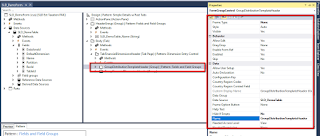Application Startup Event Manager
In Dynamics AX 2012, there are some customization points that allowed us to subscribe to event Applications. Startup delegate those were raised when the client was initializing.
But in D365 those events were deprecated and introduce some new events were to customize the application startup as per your requirement.
You can find those events to subscribe to in-class ApplicationStartupEventManager
onSystemStartup()
- This event occurs when the system starts up and Its raised once per AOS startup.
onFirstTimeUserInteractiveSessionCreated()
- This event occurs when the system is creating an interactive session for the first time for a user.
onFirstTimeUserNonInteractiveSessionCreated()
- This event occurs when the system is creating a non-interactive session for the first time for a user.
onInteractiveSessionCreated()
- This event occurs when an interactive session is created and ready for use.
- It is raised once per interactive session creation for any user.
onSessionCreated(boolean _isBatch, boolean _isInteractive)
- This event occurs when the session is created and ready for use.
- It is raised once per interactive session creation for any user.
- _isBatch specifies whether the system is running a batch job.
- _isInteractive specifies whether the session is interactive.
Let's begin to verify the above delegates
To verify the delegates we will log these events into a table.
Step-1 Create a class and subscribe to the delegate in this demo I have subscribed to only two delegates.




















